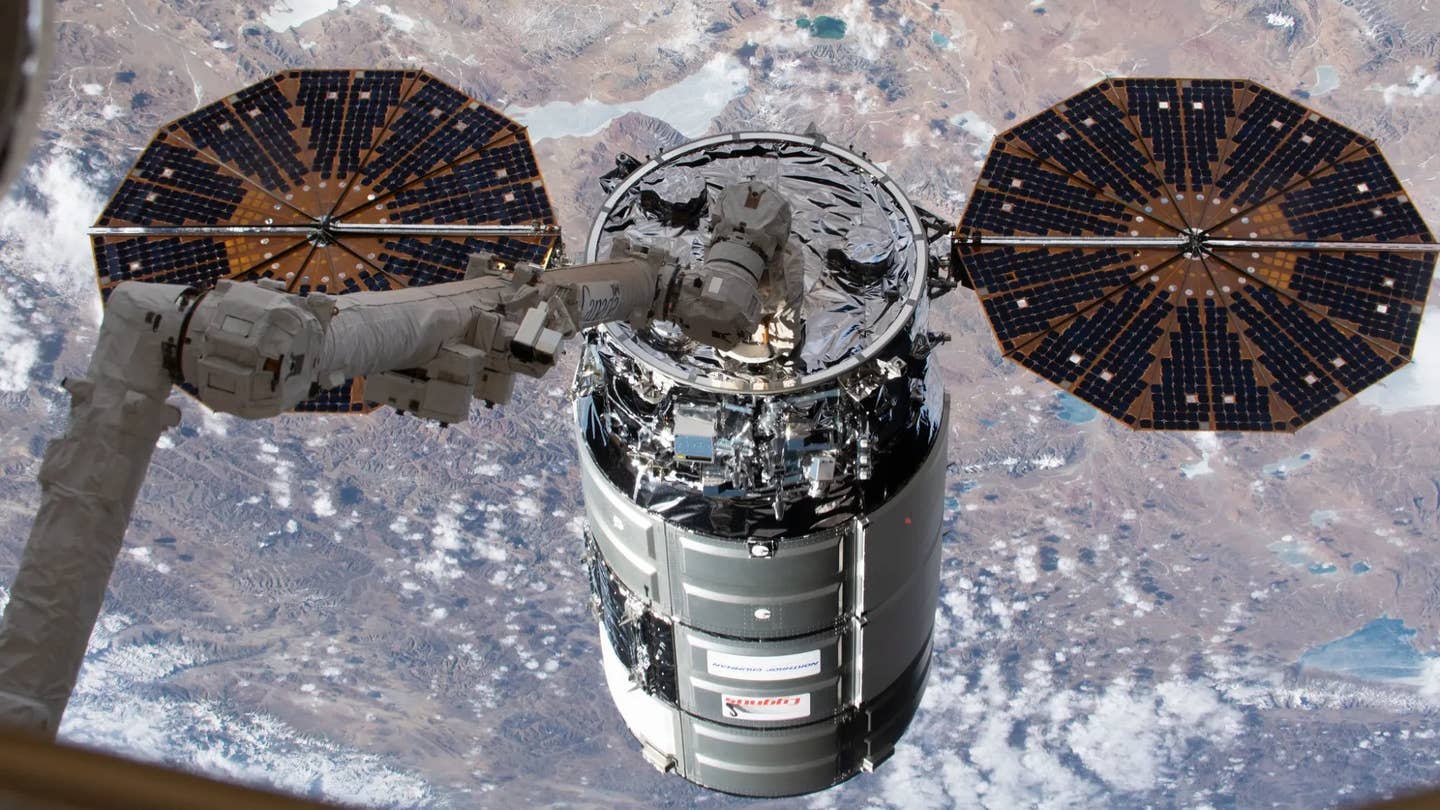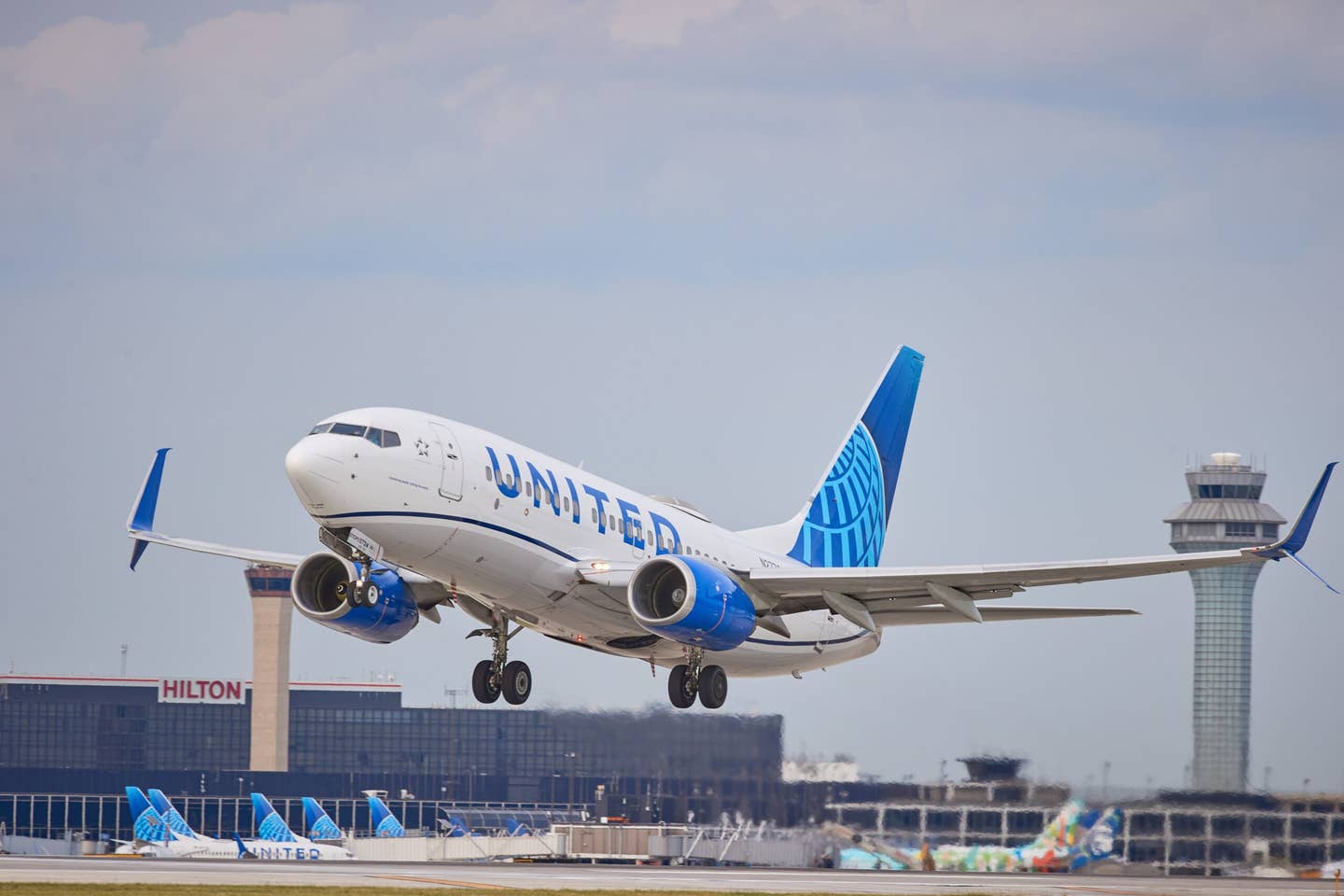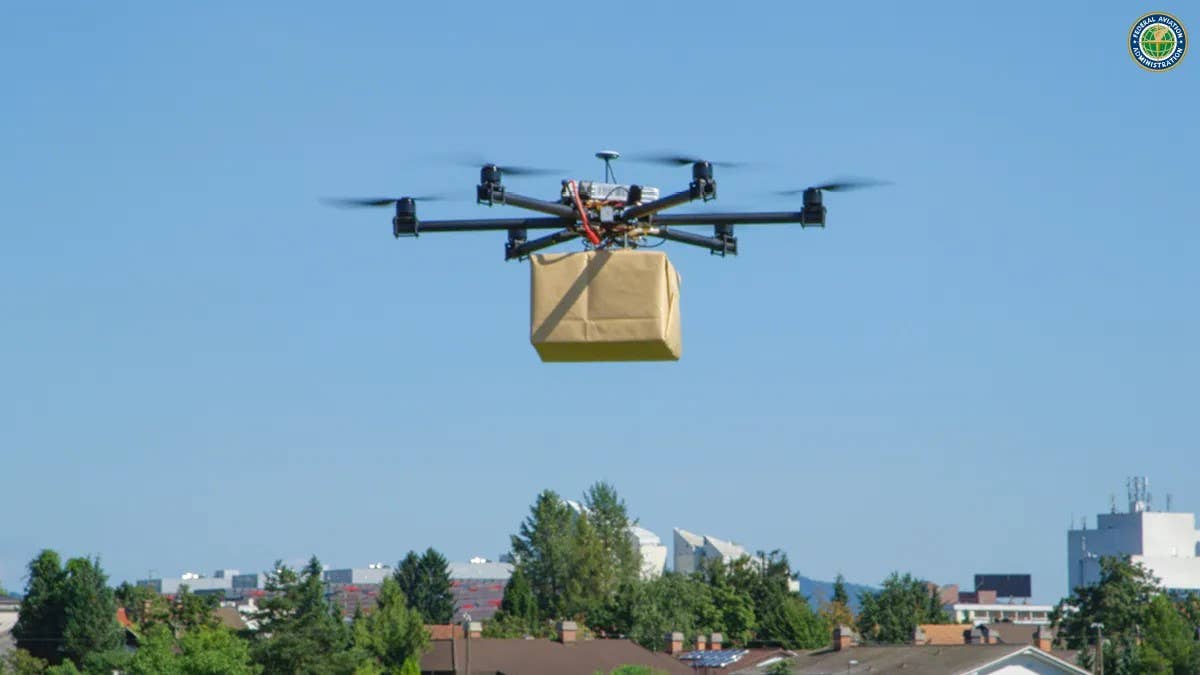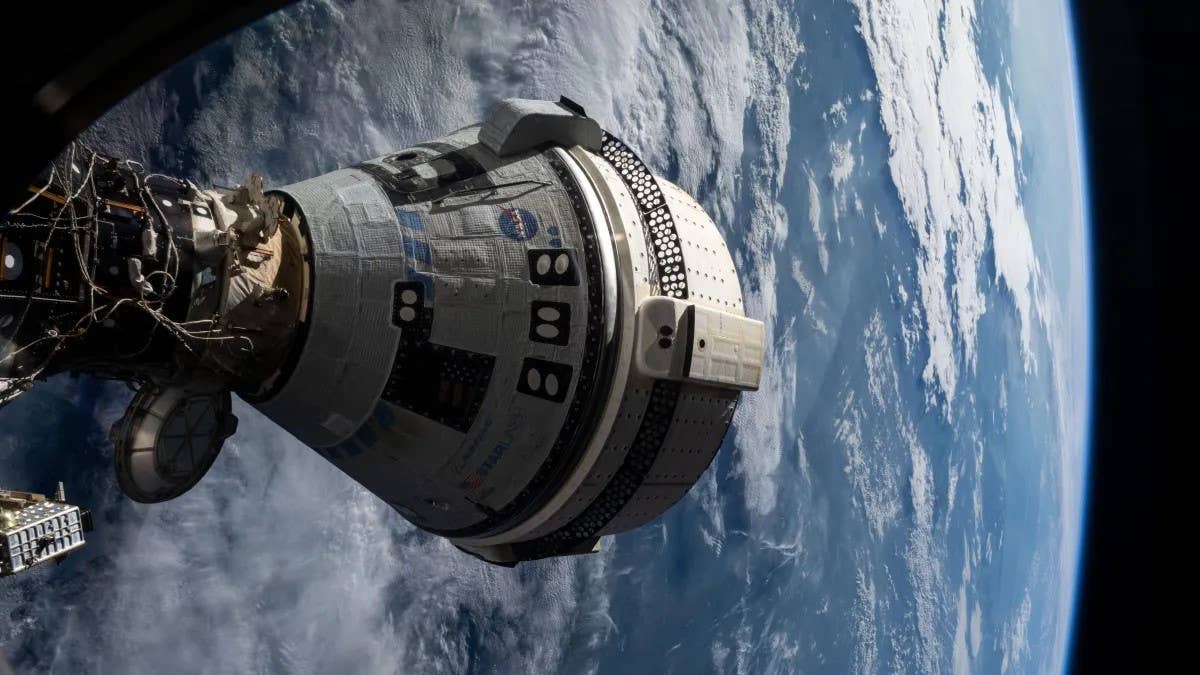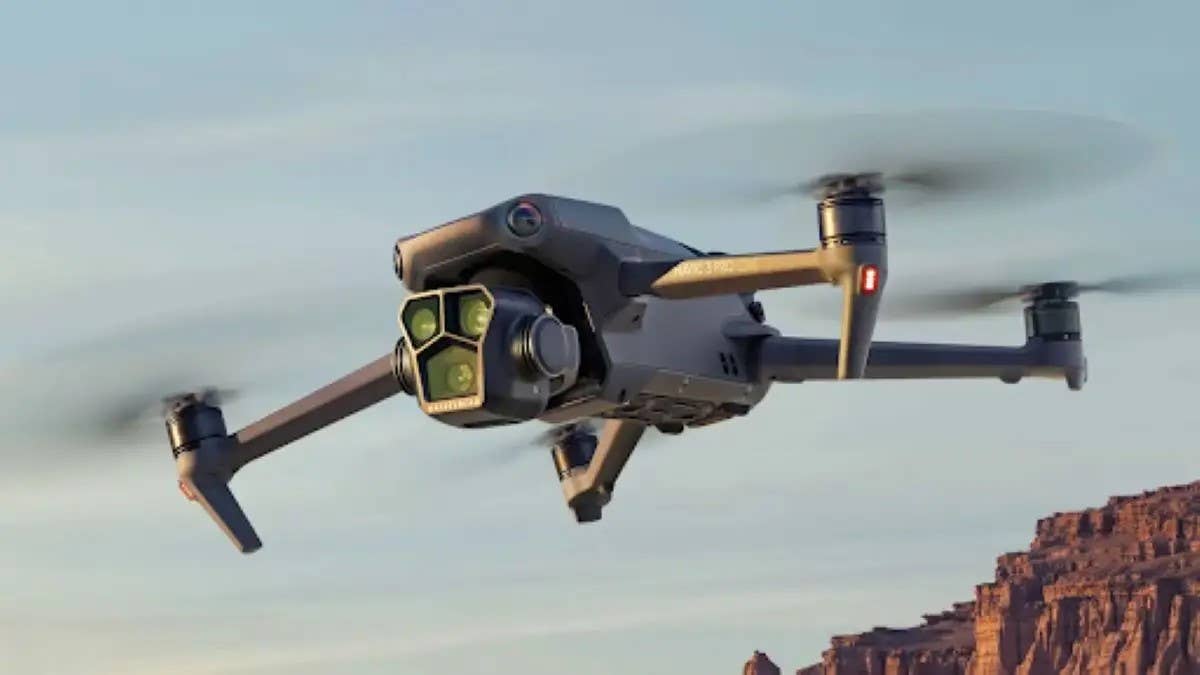Helijet Brings Electric Air Taxis to Canada
We round up news from Helijet, Beta Technologies, SpaceX, Zipline, and plenty more in this week’s Future of FLYING newsletter.

A digital rendering of Beta’s Alia-250 eVTOL, with a Helijet livery, flying in the skies above Vancouver, British Columbia. [Courtesy: Helijet]
Hello, and welcome to the Future of FLYING newsletter, our weekly look at the biggest stories in emerging aviation technology. From low-altitude drones to high-flying rockets at the edge of the atmosphere, we’ll take you on a tour of the modern flying world to help you make sense of it all.
Now for this week’s top story:
Canada’s Helijet Makes History with Beta eVTOL Order
What happened? Helijet is one of North America’s oldest and largest helicopter airlines and one of the few that offers scheduled passenger flights. Now, the company is flying into the future with its order for Beta Technologies’ Alia-250 electric vertical takeoff and landing (eVTOL) air taxi—the first such purchase by a Canadian air carrier.
Old dog, new tricks: Helijet has been around since the ’80s, but that won’t stop it from embracing technologies at aviation’s cutting edge. The firm, Beta’s first Canadian customer, expects to be the country’s first air carrier to offer passenger and cargo eVTOL flights. Beta’s Alia will complement—not replace—its fleet of Eurocopter AS350 B2s, Sikorsky S76s, Learjet 31As, and Pilatus PC-12s.
Alia is more limited than these designs, with a 250 nm range and 100 knot cruise speed. However, it produces zero carbon emissions and is expected to be far quieter than those helicopters—and cheaper, Beta and Helijet claim. Helijet will deploy it for passenger, cargo, and medical transport services.
Why Beta? Per Helijet, Beta makes for an ideal partner due to its plan to certify Alia for IFR operations. The eVTOL manufacturer also has a footprint in Canada, having opened an engineering and research and development hub in Montreal in March. It also partnered with Canadian flight simulator provider CAE to train Alia pilots and maintenance technicians.
The partners estimate that eVTOL aircraft could serve 4.2 million passengers in the Greater Vancouver area over the next 15 to 20 years, generating some $1.5 billion ($2.1 million Canadian dollars) in advanced air mobility (AAM) business activity. But they’ll need to wait for Alia’s certification, which is expected around 2026.
Quick quote: “With its mature air travel market demographic and existing challenges for conventional transportation between Vancouver Island and the Lower Mainland, southern British Columbia provides an exciting opportunity to demonstrate the commercial viability and environmental sustainability of AAM in B.C. and Canada,” said JR Hammond, executive director of Canadian Advanced Air Mobility (CAAM), the country’s national AAM consortium.
My take: Could Helijet, one of only two major scheduled passenger helicopter airline services in North America (Blade Urban Air Mobility being the other), become one of the region’s biggest AAM player?
Compared to the massive eVTOL investments made by U.S. airlines such as United and Delta, Canadian air carriers have been slower to warm up to the emerging tech. But Helijet could be set up for early success, with a built-in customer base that already seeks short-hop helicopter flights. Replacing some of those trips with air taxi routes shouldn’t harm demand—especially if Alia can offer a cheaper alternative, as the partners claim.
The new aircraft likely won’t fly until 2026. But when they do, Helijet could provide an important litmus test for AAM operations in Canada.
In Other News…
SpaceX Starship Nears Return to Flight
What happened? SpaceX’s Starship, the largest and most powerful rocket ever built, has been grounded since its April maiden voyage began and ended in flames. But the FAA in September closed its investigation into the explosion, and the agency this week announced it has now completed its safety review—a key portion of the evaluation of SpaceX’s launch license.
Back in action soon? Having completed the safety review, the FAA is now working with the U.S. Fish and Wildlife Service (USFWS) on an environmental review, the final step needed to modify SpaceX’s vehicle operator license, which may take up to 135 days. When that modification is approved, Starship will be cleared for a second test flight.
However, keep an eye on the lingering lawsuit the FAA and SpaceX are battling. If they lose the case, the FAA will need to produce an environmental impact statement analyzing the effect of Starship launches on local wildlife. That process could delay things for months—or longer.
Zipline and Cleveland Clinic Plan Prescription Drone Delivery
What happened? Zipline, the world’s largest drone delivery provider, added its fourth major U.S. healthcare partner this year in Cleveland Clinic. The hospital system will work with Zipline to launch prescription drone delivery in 2025, using its new partner’s Platform 2 (P2) delivery system.
How it’ll work: Zipline’s P2 does a couple cool things—among them is the installation of drone “drive-thru” windows that will allow Cleveland Clinic technicians to load the aircraft without leaving the lab. Rather than drop prescriptions using a parachute, like Zipline’s Platform 1 does, P2 will lower a small, autonomous droid that steers itself to a landing area the size of a patio table.
The collaboration makes sense for Cleveland Clinic, which has been lauded for its supply chain and innovative use of technology. Eventually, the partners plan to ramp up with deliveries of lab samples, prescription meals, and more.
And a Few More Headlines:
- Ireland’s Manna Drone Delivery launched commercially in the U.S. with Halloween deliveries for trick-or-treaters.
- Virgin Galactic completed its Galactic 05 mission, the company’s sixth successful spaceflight in as many months.
- Chinese eVTOL manufacturer EHang said it expects to begin delivering its type-certified air taxi to customers in the coming months.
- Germany’s Lilium, another eVTOL maker, appointed ArcosJet as its exclusive Lilium Jet dealer in the United Arab Emirates, Israel, and Cyprus.
- Tampa International Airport (KTPA) hosted a test flight of Volocopter’s eVTOL for city and state officials.
On the Horizon…
Kicking off things with a pair of developments FLYING covered this week, the FAA and the U.S. Air Force, as well as the state of Utah, have stepped up their AAM efforts.
Starting with the two government entities: The FAA and AFWERX, the innovation arm of the Air Force, are collaborating to share flight data and testing capabilities for eVTOL and autonomous aircraft. AFWERX has awarded millions of dollars worth of contracts to 36 electric aircraft and technology developers, and its learnings could help the FAA meet its Innovate28 goals. The partnership is expected to benefit U.S.-made aircraft in particular.
Regulators in Utah, meanwhile, released an AAM blueprint resembling a smaller, state-level version of Innovate28. The report provides an interesting look at how individual states may initially tackle these new services. While it’s jampacked with guidance, the researchers’ key takeaway was that Utah already has plenty of assets to work with, and it could see fully operational AAM services by 2028.
We’ve got a couple of Congressional updates this week too. The big one is the introduction of the American Security Drone Act of 2023 to the House Select Committee on the Chinese Communist Party. The bill, initially proposed in February by Senators Mark Warner (D-Va.) and Rick Scott (R-Fla.), would prevent federal departments and agencies from operating, procuring, or using federal funding to purchase drones made in China and Russia.
Meanwhile, Warner and other legislators this week announced that the Senate passed a measure to limit federal funding for drones made in China, Russia, Iran, North Korea, Venezuela, and Cuba—collectively described as the “New Axis of Evil.” The amendment will withhold funding included in the upcoming FAA appropriations package.
Staying at the federal level, the U.S. Departments of Justice and Homeland Security could soon lose the ability to down rogue drones, as their counter-drone authority, established in 2018, is set to expire November 18. Christopher Wray, director of the FBI, said failure to reauthorize the two agencies could leave the U.S. “effectively defenseless” against threats to mass gatherings, airports, and other critical infrastructure.
Speaking of critical infrastructure: In New York’s Capital Region, officials have introduced a bill that would prevent drones from flying near schools and other buildings with that label. The legislation appears after a series of incidents involving drones flying over schools.
Mark Your Calendars
Each week, I’ll be running through a list of upcoming industry events. Here are a few conferences to keep an eye on:
- Dubai Air Show—November 13-17 in Dubai, United Arab Emirates
- Aerospace Tech Week Americas 2023—November 14-15 in Atlanta
- Advanced Air Mobility Summit 2023—November 20-21 in Lisbon, Portugal
- ICAO Drone Enable—December 5-7 in Montreal
- 11th Annual eVTOL Symposium—February 6-8 in Silicon Valley, California
- Drone Show Korea 2024—March 6-8 in Busan, South Korea
- World's Unmanned Aerial Vehicle Conference—March 17-19 in Jerusalem
- AUVSI Xponential 2024—April 22-25 in San Diego
- Vertical Flight Society's Forum 80—May 7-9 in Montreal
Tweet of the Week
Want to see your tweet here next week? Have comments or feedback? Share your thoughts on Twitter and tag me (@jack_daleo)! Or check out FLYING’s media accounts:
Facebook: FLYING Magazine - Home (facebook.com)
I want to hear your questions, comments, concerns, and criticisms about everything in the modern flying space, whether they’re about a new drone you just bought or the future of space exploration. Reach out to jack@flying.media or tweet me @jack_daleo with your thoughts.

Subscribe to Our Newsletter
Get the latest FLYING stories delivered directly to your inbox

